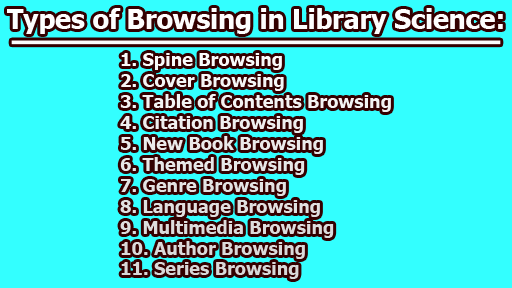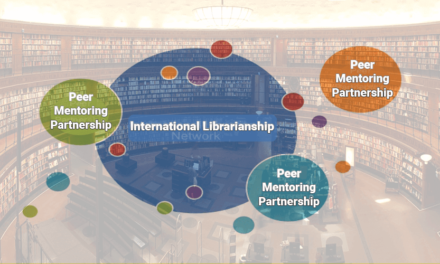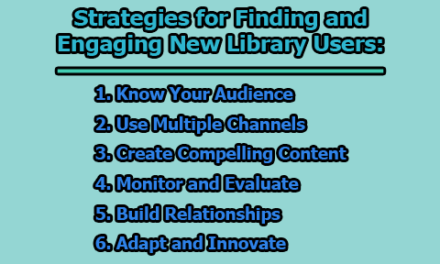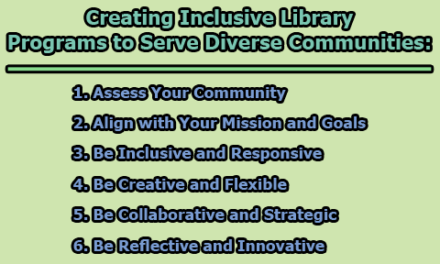Types of Browsing in Library Science:
In the realm of Library Science, various browsing methods empower users to explore and access information effectively, enhancing the overall library experience for patrons. From traditional approaches like spine browsing to specialized techniques such as citation browsing and themed browsing, each method caters to diverse needs, fostering knowledge exploration, discovery, and serendipity. This article delves into these types of browsing in library science, showcasing their significance in guiding users toward relevant materials and enriching their engagement with the library’s extensive collection.
1. Spine Browsing: Spine browsing, a time-honored and practical approach, involves physically scanning the titles on the spines of books arranged on library shelves. This method allows patrons to quickly and visually assess the collection, facilitating serendipitous discoveries and unexpected encounters with books they might not have considered through conventional search methods. It is especially useful for users seeking specific titles or authors without relying on the library’s catalog. Spine browsing offers a tactile and immersive experience that remains valued by those who appreciate the ambiance of a physical library.
2. Cover Browsing: Cover browsing taps into the power of visual appeal, as users select books based on their covers or illustrations. Particularly popular for fiction, children’s books, and graphic novels, this method entices readers with attractive visuals and evocative imagery. An intriguing cover can spark curiosity and prompt users to explore the book’s content further. While cover browsing may not guarantee a perfect match with the book’s content, it serves as an engaging and enjoyable way to discover new genres, authors, and artistic expressions.
3. Table of Contents Browsing: Table of contents browsing offers a focused and methodical approach to finding books that address specific topics of interest. By perusing the table of contents, users can gauge whether a book covers subjects aligned with their research needs. Researchers, students, and anyone seeking in-depth knowledge on a particular subject can benefit from this browsing method, as it enables them to locate relevant chapters, sections, or discussions within a book.
4. Citation Browsing: Citation browsing is a research-driven method utilized by scholars, researchers, and students to expand their understanding of a specific topic. By following references from one book or article to another, users can access related resources and academic discourse. Citation browsing fosters a comprehensive exploration of a subject, enabling users to build upon existing knowledge and identify key works in a given field.
5. New Book Browsing: New book browsing offers patrons an opportunity to stay up-to-date with the latest releases and trends. Libraries often curate dedicated sections or displays for new acquisitions, making it convenient for users to discover fresh titles and explore emerging authors or topics. This browsing method is particularly appealing to avid readers, keeping them informed about current events and contemporary literature.
6. Themed Browsing: Themed browsing invites users to immerse themselves in curated displays, exhibits, or collections that highlight specific themes or topics. This approach fosters serendipitous discoveries and encourages interdisciplinary exploration. Themed displays may be based on seasonal events, historical anniversaries, cultural celebrations, or trending subjects, catering to a wide range of interests and promoting lifelong learning.
7. Genre Browsing: Genre browsing allows patrons to explore the library’s collections categorized by specific genres, catering to diverse literary preferences. Whether it’s mystery, romance, science fiction, or fantasy, this method facilitates the discovery of new authors, series, and classic works within preferred genres. Genre browsing fosters engagement with fiction enthusiasts and empowers readers to delve into different literary styles and themes.
8. Language Browsing: Language browsing opens a gateway to diverse linguistic resources, organized by different languages, beyond the library’s primary language. Multilingual communities and language learners benefit from this approach, as it allows them to access literature, research materials, and cultural works in their desired language, promoting cultural diversity and inclusivity.
9. Multimedia Browsing: Multimedia browsing offers an expanded library experience, encompassing a wide range of media resources such as DVDs, CDs, and audiobooks. Users can explore and discover new movies, music, audio content, and educational materials beyond the traditional realm of printed texts. Multimedia browsing appeals to diverse learning styles and preferences, enriching the library’s offerings for a broader audience.
10. Author Browsing: Author browsing allows users to immerse themselves in the literary world of specific writers. By exploring the library’s collections based on authors, readers can delve into an author’s entire body of work beyond individual titles. This method fosters a deeper appreciation for an author’s writing style, themes, and artistic evolution, encouraging users to explore beyond familiar works.
11. Series Browsing: Series browsing caters to fans of ongoing or established book series, providing a seamless reading experience. Users can access all books within a specific series, whether it’s well-known series like Harry Potter or Hunger Games or lesser-known niche series. This method fosters engagement with series enthusiasts and encourages readers to follow captivating storylines across multiple volumes.
In conclusion, the diverse array of browsing methods in Library Science reflects the dynamic nature of information access and exploration. From the enduring practice of spine browsing to the visually appealing cover browsing, and the research-driven citation browsing, each method contributes uniquely to the library experience. New book browsing keeps users up-to-date with current trends, while themed browsing fosters interdisciplinary learning. The categorization of materials by genre, language, author, and series facilitates tailored exploration. Moreover, multimedia browsing extends beyond traditional texts, catering to various learning preferences. Embracing this rich assortment of browsing techniques ensures that libraries remain vibrant centers of intellectual growth, community engagement, and lifelong learning.
FAQs:
What is “Spine Browsing” in Library Science?
Spine browsing is a traditional method that involves physically scanning the titles on the spines of books arranged on library shelves. Patrons can quickly assess the collection, making serendipitous discoveries and finding books of interest without relying on the library’s catalog. This method remains popular for its tactile and immersive experience in physical libraries.
What is “Cover Browsing” and how is it used in libraries?
Cover browsing entails selecting books based on their covers or illustrations. This approach is often employed for fiction, children’s books, and graphic novels. Users are enticed by attractive visuals, introducing them to new genres or authors they might not have considered otherwise.
How does “Table of Contents Browsing” help users find specific information?
Table of contents browsing involves checking the contents of books to identify those that cover topics of interest. This focused approach aids researchers and students in locating relevant sections or chapters within a book, allowing them to access targeted information.
What is “Citation Browsing” and who uses it?
Citation browsing is a research-driven method used by scholars and researchers. It involves following references from one book or article to another, enabling users to explore related resources and academic discourse on a specific topic. Citation browsing facilitates comprehensive research and the identification of key works in a given field.
How does “New Book Browsing” keep users updated with library acquisitions?
New book browsing involves exploring the library’s latest acquisitions through dedicated sections or displays. This method allows patrons to discover fresh titles, stay informed about current events, and explore emerging authors or trending topics.
What is the purpose of “Themed Browsing” in libraries?
Themed browsing invites users to explore curated displays, exhibits, or collections highlighting specific themes or topics. It fosters serendipitous discoveries, encouraging users to explore interdisciplinary subjects and diverse resources.
How does “Genre Browsing” cater to diverse reading preferences?
Genre browsing allows patrons to explore the library’s collections categorized by specific genres, such as mystery, romance, science fiction, or fantasy. This method caters to diverse reading preferences, facilitating the discovery of new authors and series within preferred genres.
What is “Language Browsing” and who benefits from it?
Language browsing organizes library collections by different languages, providing access to resources beyond the library’s primary language. This method benefits multilingual communities and language learners, allowing them to access literature and cultural works in their desired language.
How does “Multimedia Browsing” expand the library experience?
Multimedia browsing includes a wide range of media resources, such as DVDs, CDs, and audiobooks, extending beyond traditional text-based materials. It enriches the library experience, catering to diverse learning styles and interests.
How does “Author Browsing” offer a comprehensive understanding of an author’s work?
Author browsing allows users to immerse themselves in an author’s entire body of work beyond individual titles. This method fosters a deeper appreciation for an author’s writing style, themes, and artistic evolution.
What is the purpose of “Series Browsing” in libraries?
Series browsing allows users to access all books within a specific series, appealing to fans of ongoing or established book series. This method provides a seamless reading experience, encouraging users to follow captivating storylines across multiple volumes.
References:
- Brown, C. C. (2011). Browsing and Searching in Online Catalogs and Beyond. Libraries Unlimited.
- Lancaster, F. W. (1978). Library Browsing: Intellectual Access to Information. University of Illinois Graduate School of Library Science.
- Theng, Y. L., Foo, S., Goh, D. H. L., & Na, J. C. (Eds.). (2009). The Handbook of Research on Digital Libraries: Design, Development, and Impact. IGI Global.
- Marchionini, G. (1995). Information Seeking in Electronic Environments. Cambridge University Press.
- Shah, C., & Marchionini, G. (2010). Serendipity in Information Seeking: An Integrative Review. Journal of the American Society for Information Science and Technology (JASIST), 61(12), 2448-2468.
- Picariello, A., Vitiello, G., & de Lucia, A. (2014). Visual Browsing in Digital Libraries: A Survey. International Journal on Digital Libraries (IJDL), 15(4), 211-235.
- Schamber, L. M., Barry, C. L., & Lundstrom, S. E. (1990). Subject Browsing Behavior in an Online Catalog: An Exploratory Study. Journal of the American Society for Information Science (JASIS), 41(5), 357-376.

Assistant Teacher at Zinzira Pir Mohammad Pilot School and College










